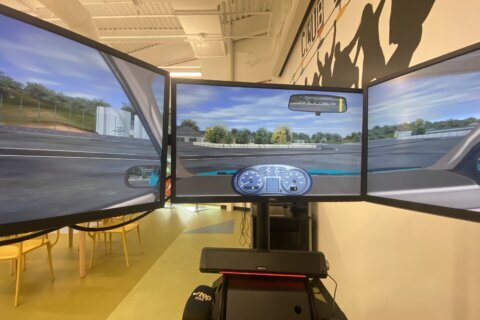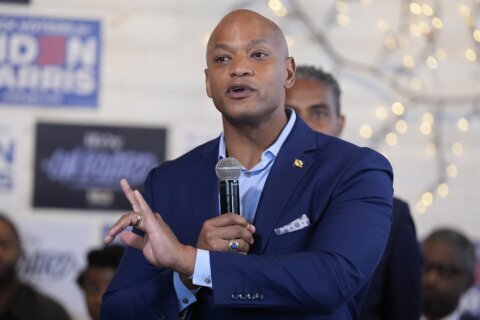A growing number of school systems are allowing students to return to classrooms, but Maryland educators say they continue to learn valuable lessons from teaching students virtually during the COVID-19 pandemic.
Educators joined U.S. Sen. Chris Van Hollen, for a virtual meeting on Monday, nearly a year after the Maryland Democratic lawmaker convened a similar meeting when they were first scrambling to deal with the challenges of the coronavirus.
The challenges for many school systems were extensive. The CEO of the Baltimore City schools, Sonja Santelises, said Monday that families of a large share of students didn’t have a computer, much less internet access.
“Baltimore City Public Schools was faced with the challenge of providing virtual learning for just under 80,000 students, despite the fact that more than 40% Baltimore city households had no internet access,” she said. “And more than a third of our families did not have appropriate devices for distance learning.”
As a result, the school system bought more than 55,000 laptops and worked to develop close to 15,000 hot spots so students could connect to the internet.
Andrew Zuckerman, the chief information officer for Prince George’s County schools, said their system faced similar issues. The school system bought more than 65,000 Chromebooks for students.
“I’m pleased to say that today — I know it’s sounds crazy — but today is our final day of shipment from that order, due to supply chain issues all the way from July,” he said.
Zuckerman noted that as schools continue to get students back in classrooms, they will still need computers for hybrid learning as the transition takes place.
They all agreed that education will never be quite the same.
“There was a time before the pandemic that broadband was nice to have, not need-to-have,” said Jessica Rosenworcel, the acting chair of the Federal Communications Commission, who also took part in the meeting. “But the last year has proven conclusively we need to reach 100% of us.”
Rosenworcel said she believes there will continue to be a need for special programs related to internet access, to make sure the “homework gap” for students doesn’t widen.
The educators praised Congress for approving federal money that helped to get them the assistance they need — particularly Van Hollen, who began pressing to address the digital divide long before the pandemic.
“It is our goal to make sure that every single household, business, person in the country is connected to high-speed internet in the coming years,” Van Hollen said.
The latest COVID-19 relief legislation passed by Congress includes more than $1.95 billion for Maryland K-12 education, Van Hollen said.
Nationwide, more than $7 billion will go toward the FCC’s E-Rate program, which helps school systems improve broadband access and assists in getting students the resources they need to work on computers from home.
- Sign up for WTOP alerts
- Sign up for WTOP’s coronavirus email newsletter
- Latest coronavirus test results in DC, Maryland and Virginia
- Coronavirus vaccine FAQ: What you need to know
- Latest vaccination numbers in DC, Maryland and Virginia
- Biden, CDC director warn of virus rebound if nation lets up
- Md. COVID cases rise following easing of restrictions, despite growth in vaccinations
- Teens volunteer as ‘vaccine hunters’ to help older residents get appointments
Looking for more information? D.C., Maryland and Virginia are each releasing more data every day. Visit their official sites here: Virginia | Maryland | D.C.








